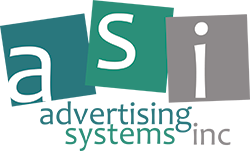
By Jay Bemis | Advertising Systems Inc.
A year ago, back-to-school shopping meant big-ticket items such as computers and office-like furniture for online learning at home, thanks to a pandemic. This summer, with most students scheduled to return to the classroom this fall, those shopping lists should look more traditional with basic supplies and new clothing the top needs.
For marketers, the challenge in the weeks ahead is reaching those consumers who may be returning to stores for their back-to-school purchases, but also those who will continue their pandemic-driven, online-shopping habits that studies keep insisting are here to stay.
For their part, shoppers are ready to spend, according to a June survey from accounting behemoth KPMG. Polling 1,000 consumers, KPMG found that parents plan to spend $268 per child this back-to-school shopping season — or an increase of 9% from the $247 they spent per student in 2020.
One Way to Reach Today’s Back-to-School Audiences
Influencer marketing is one key way to reach today’s pandemic-driven, back-to-school shoppers, says Danielle Wiley, a Forbes Agency Council member.
“Old-school advertising has become increasingly irrelevant during recent years, thanks in no small part to shifts in the ways we consume media,” Wiley, the founder and CEO of a San Francisco agency that specializes in influencer marketing, recently wrote for Forbes.
“Businesses should be focused on reaching consumers in the digital environments where they spend most of their time, but not with yesterday’s brand-building tactics.”
She says influencer marketing brings brands the personalization they need for messaging in the 2020s.
For example, “Who better to connect with back-to-school shoppers than actual parents with actual back-to-school shopping needs?” Wiley asks. “Today’s online creators often have the authenticity consumers (especially younger generations like Gen Z and millennials) are looking for, along with credibility in topic niches of all kinds.”
These creators, she adds, can present back-to-school campaigns that pack a variety of pandemic-related perspectives, such as:
- Affordable supplies for those under financial strain.
- Easy “but impactful” teacher gifts.
- Online-shopping options and contactless delivery.
- The shift from home-learning supplies back to traditional.
- The importance of personal supplies for schools that will no longer provide them.
- The best hand sanitizers and masks for kids/college students.
- Specialized products such as antimicrobial backpacks and lunchboxes.
- The latest clothing and accessory trends.
“Brands have the opportunity to drive the right kind of engagement in an incredibly targeted way by simply allowing influencers to tell their own authentic and diverse stories,” Wiley says.
To Whom Shall a Back-to-School Marketer Turn?
Finding the right influencers for today’s back-to-school marketing “can be done internally, using influencer platform discovery tools or by manually searching social media platforms,” according to Wiley.
“It can be useful to focus on identifying micro-influencers, who often have a more personal and influential connection with their audience.”
Smaller businesses may want to consider working with a professional agency to save time and resources, she says, adding: “Agencies often have their own influencer networks and can offer expertise and guidance every step of the way.”
Last year, many brands may have pulled back on back-to-school outreach because of uncertainty around virtual learning and hybrid school schedules. As the 2021-2022 school year approaches and families around the U.S. gear up for the next normal, the time for reaching target audiences with influential creators is now.
Last year, “many brands may have pulled back on back-to-school outreach because of uncertainty around virtual learning and hybrid school schedules,” Wiley concludes.
However, “As the 2021-2022 school year approaches and families around the U.S. gear up for the next normal, the time for reaching target audiences with influential creators is now.”
